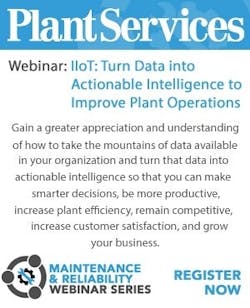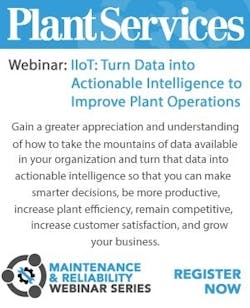What are your numbers telling you?
Kathie Poindexter is the director of product marketing for manufacturing and supply chain for Epicor Software Corporation. In this role, Kathie manages key product and market initiatives for the Epicor ERP product line. She is keenly focused on the challenges faced in the discrete manufacturing market space to more fully understand the latest trends and emerging technologies that affect manufacturers in the U.S and internationally.
During the live Q&A portion of the Plant Services webinar “Turn Data into Actionable Intelligence to Improve Plant Operations,” Kathie tackled several attendee questions related to Big Data, data visualization, and how these concepts can affect your plant's KPIs.
PS: How important is data visualization?
KP: It is extremely important. And as more businesses are discovering data visualization, it's becoming an increasingly important component of analytics in this age of Big Data. The availability of new in-memory technology and high-performance analytics that use data visualization provides a better way to analyze data more quickly than we have been able to do in the past. Visual analytics helps enable organizations to take raw data and present it in a meaningful way that generates the most value.
I've found that when used with Big Data, visualization is bound to lead to some challenges that I talked about during the webinar. But if you're prepared to deal with these hurdles, a data visualization strategy can offer an opportunity for success that is much greater than it ever has been before with these intuitive and robust tools, especially as they're being deployed in the cloud.
PS: What is the key benefit of using KPIs and how can we ensure they're actually used?
KP: One of my favorite sayings is "what gets measured is what gets done." If you're not measuring something, how would people know it's important? How would people know that it's something they need to focus on? How would they even know if what they're doing is getting the results that are desired?
A key benefit of a KPI program is that it often motivates your entire team to meet goals. As I set out goals and measurements for my team, I see them striving to make sure they hit those goals. They want to be the first one to get the task done. They want to make sure they are showing as completed on a task, on time with a quality delivery. And one way to make sure a KPI helps you achieve these goals is to involve your colleagues. Make sure they know why we're measuring the goal, why it's important, and show them the results and how this is making an impact beyond just your own department.
Making performance a team sport simply works better for achieving your objectives efficiently. And this collaborative effort often include needs to include everyone that is involved, not just your team or department but the other teams and departments that might be affected by those particular KPIs. Share the results with them. Show them that what they're doing has impacted how your team's been able to achieve their own goals.
PS: During your presentation, you talked a bit about dashboards. How are they used to view analytics?
KP: Dashboards have been around for some time, but they are growing much more interactive. They can show real-time data, historical data, and data around something that's being forecasted in the future. They provide an easily understood way to visualize business indicators that you might be interested in.
For example, time-strapped managers or executives often just need a visual fact-driven overview of the things that are really important to them. They want to be able to arrive in the morning, open up their homepage, and see dashboards that give them a quick view of everything that's going on in the organization, things they might need to focus on.
That's where dashboards are just brilliant: You can see at a glance how the business is performing and how your particular department is performing. One of the differences is that you have the option to dive into the underlying data in a grid that sits behind that dashboard. Non-technical people can quickly build an interactive dashboard, customize it, apply permissions, collaborate, revise, and they can view or print it on the spot, all without help from an IT staff.
A well-thought-out dashboard can be so compelling that many of our customers confess to looking at them first thing in the morning, throughout the day, and right before they shut down for the day. Those of us who work after hours, we access it on our cell phones from home to keep a pulse on things that might be going on or to monitor alerts about critical activities.
And being able to do this whether you're in your plant, at your desk, out on the floor, at another facility, at a customer site, at the airport, in a hotel, or at home, all with just a simple click of the button, is more important than ever in the mobile society that we're living in today.

